Corn - the real "queen of the fields" - one of the most common cereals cultivated throughout the world. Easily adapts to any climate, high-yielding, but - with good care after sowing.
A man takes literally everything from corn and uses it in various spheres of life - cobs, corn silk, stalks and leaves. This is not only a very useful food product, the basis for the production of medicines, but also a huge forage base for livestock (grains go to feed poultry, pigs, and the stems - to the production of silage).
Vegetables are planted in Russia and Ukraine, the main thing is to comply with the technology of sowing, and to take care after shoots appear properly.
Table of contents
How to prepare corn for planting
Corn - the most thermophilic cereal plant. In addition, it is so “domesticated" by man that it does not occur in wild form (it is not capable of sprinkling seeds and sprout on its own). Consequently, to obtain high yields for corn, careful care is needed, and it should be started from the seed base.
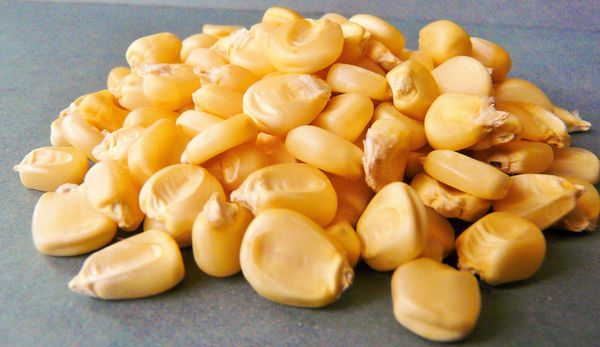
Corn seeds before planting in the soil require certain preparatory measures.
- Firstly, specialized farms are engaged in growing cereal for seeds. They are also working on the breeding of new hybrid varieties; they are striving to constantly improve the seed base.
- Secondly, other specialized farms are engaged in special preparation of seeds for sowing. For this, the grains are separated from the cobs, cleaned and sorted strictly according to the varieties.Then the seeds are dried and pickled - treated with special fungicidal preparations that protect the grain from fungal and other bactericidal diseases. Etching protects not only the seeds, but also the seedlings from pathogens in the soil, taking into account the time of sowing.
- Third, conduct mandatory calibration corn seed, i.e. their division into fractions by size. This provides an accurate calculation of the seeding rate per 1 ga and uniformity of sowing.
- Fourth, before sowing spend air heat heating seed grains, which increases the rate of crop germination, sprout survival in the early stages.
The best predecessors for corn
To increase the yield of any crop plays an important role crop rotationi.e. annual alternation of crops in the same area of sowing.
For corn, the most favorable precursors are potatoes, legumes and winter wheat. Good yield gives our grass after alfalfa on steam areas.
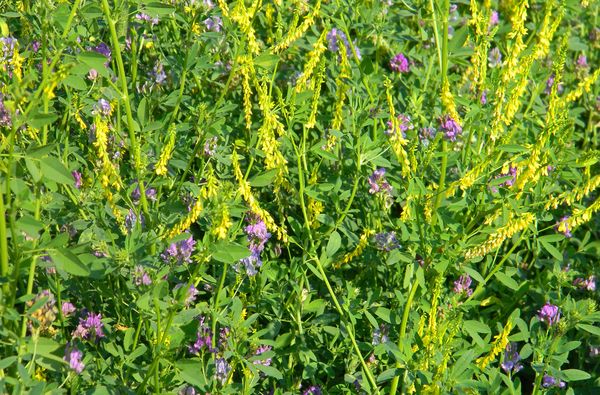
If the acidity of the soil does not exceed the norm - from 5.5 to 7 pH, systematically apply correctly selected fertilizers, the corn can be sown as a monoculture, i.e. several years in a row on the same acreage.
Seeding culture
Since corn is a thermophilic plant, it can be sown after the soil has warmed up to 8-12 degrees at a depth of about 10 cm.
Depending on the climatic conditions of the area, this occurs approximately from early to mid May. Depth of seeding into the soil is 5-6 cm, in arid areas - up to 8 cm.
Density
Sowing density depends on the natural conditions of the growing area, purpose (grain or silage), corn variety (early or late), maximum height of adult plants.
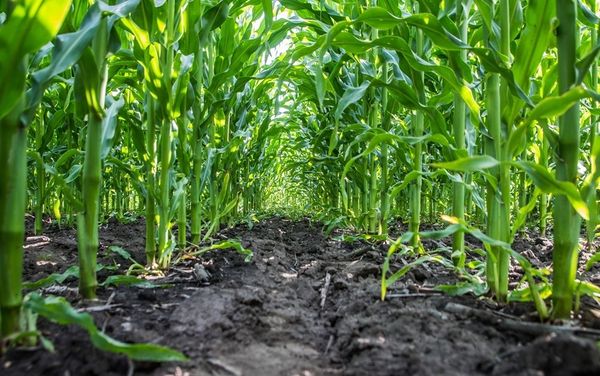
Taking into account all the parameters, the planting density is calculated or selected individually so that each plant receives a sufficient amount of moisture, light, and nutrients. She may fluctuate from 50,000 to 120,000 seeds / ha.
For example, the density of the stem stand of early-maturing varieties in the steppe zone should be an average of 60 thousand per hectare, approximately 40-45 plants per 10 meters with a row spacing of 0.7 m.
Seed sowing rate per 1 ha in kg
The seeding rate, as well as the density, depends on a number of indicators: the growing area, the direction of use of the crop, the sowing method, the size of the planting seeds, the individual characteristics of the hybrids.
Seed consumption varies from 15 to 25 kg per hectare.
The need for thinning seedlings
Usually, corn fields are sown with the help of special air seeders. They provide a “dotted” method for planting seeds into the soil while maintaining the exact distance between the seeds in a row and between rows.
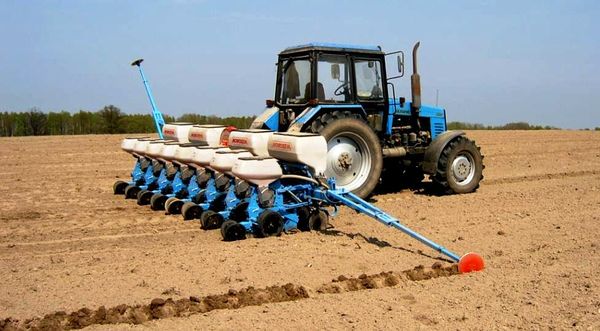
Thus, the right amount of seeds is planted immediately at a given distance from each other. Thinning seedlings not required and does not make sense.
Cultivation technology
The process of growing corn cereals is quite simple, includes several basic steps:
- tillage before sowing - autumn plowing the field to a depth of 25-30 cm, if necessary, at the same time it is possible to introduce herbicides against perennial weeds;
- autumn cultivation with fertilization;
- spring soil preparation method harrowing - early (with a large contamination of soil by weeds) and pre-sowing cultivation (to a depth of sowing seeds - 6-8cm), the introduction of complex fertilizers;
- seed preparation for sowing;
- sowing corn taking into account the timing and compliance with the norms and depth of sowing;
- pre- and post-emergence harrowing to destroy weeds and loosen the soil;
- harvesting (in earlier periods, corn is harvested for silage, and when grain moisture reaches 35-40%, grain is harvested).
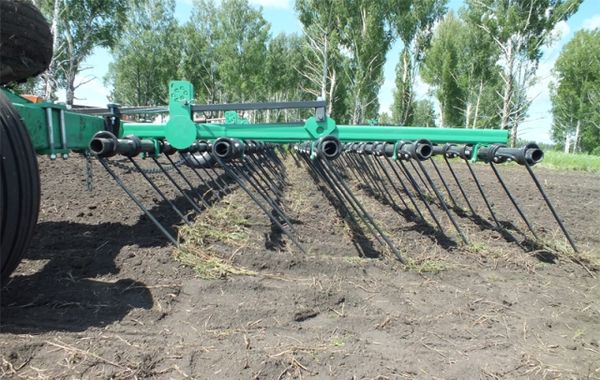
High yield and high demand make culture attractive for cultivation. In the countries of the world, 20% of the whole grain is used in the food industry, the same amount in technical production, more than 60% goes to feed.
The ability to adapt to different weather conditions made it possible for breeders to create a variety of hybrid varieties.Any farmer will be able to pick up hybrids that best suit this climate, and grow a great harvest.
